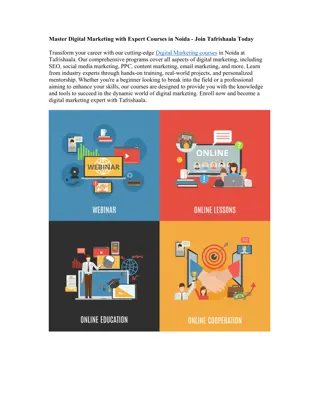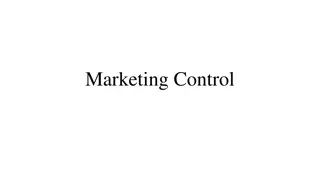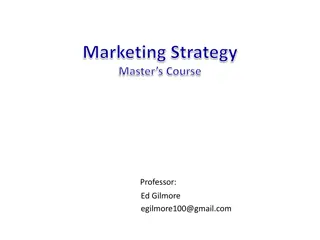
Strategic Marketing Applications in Consumer Behavior
Explore the significance of strategic marketing applications in understanding consumer behavior for effective marketing campaigns, consumer engagement, and business growth. Learn how studying consumer psychology, behavior, and motivation can enhance marketing strategies and adapt to consumer preferences.
Download Presentation

Please find below an Image/Link to download the presentation.
The content on the website is provided AS IS for your information and personal use only. It may not be sold, licensed, or shared on other websites without obtaining consent from the author. If you encounter any issues during the download, it is possible that the publisher has removed the file from their server.
You are allowed to download the files provided on this website for personal or commercial use, subject to the condition that they are used lawfully. All files are the property of their respective owners.
The content on the website is provided AS IS for your information and personal use only. It may not be sold, licensed, or shared on other websites without obtaining consent from the author.
E N D
Presentation Transcript
Strategic marketing applications
INTRODUCTION As compared to ten or even twenty years ago, today, consumers have so many choices to make. Today as always, business growth depends heavily on loyal customers who return because they are satisfied with the product and/or service they have received. Thus, firstly companies have to bring consumers into the stores. The companies bring consumers into the store by marketing their product. It is necessary to discuss strategic marketing applications because it gives direction to a firm s efforts and better enables it to understand the dimensions of marketing research, consumer promotion, and price planning. analysis, product, distribution,
The study of consumers helps firms and organizations improve their marketing strategies by understanding issues such as: The psychology of consumers as to how they think, feel, reason, and select between different alternatives (e.g., brands, products); The psychology of consumers as to how they are influenced by their environment (e.g., culture, family, signs, media); The behavior of consumers while shopping or making other marketing decisions; How limitations in consumer knowledge or information processing abilities influence decisions and marketing outcome; How consumer motivation and decision strategies differ between products that differ in their level of importance or interest that they entail for the consumer; and How marketers can adapt and improve their marketing campaigns and marketing strategies to reach the consumer more effectively
Understanding these issues helps us adapt our strategies by taking the consumer into consideration. For example, by understanding that a number of different messages compete for our potential customers attention, we learn that to be effective, advertisements must usually be repeated extensively. We also learn that consumers will sometimes be persuaded more by logical arguments, but at other times will be persuaded more by emotional or symbolic appeals. By understanding the consumer, we will be able to make a more informed decision as to which strategy to Employ.
There are four main applications of consumer behavior: The most obvious is for marketing strategy i.e., for making better marketing campaigns. For example, by understanding that consumers are more receptive to food advertising when they are hungry, we learn to schedule snack advertisements late in the afternoon. By understanding that new products are usually initially adopted by a few consumers and only spread later, and then only gradually, to the rest of the population, we learn that (1) Companies that introduce new products must be well financed so that they can stay afloat until their products become a commercial success and (2) it is important to please initial customers, since they will in turn influence many subsequent customers brand choices.
A second application is public policy. In the 1980s, Acutance, a near miracle cure for acne, was introduced. Unfortunately, Acutance resulted in severe birth defects if taken by pregnant women. To get consumers attention, the Federal Drug Administration (FDA) took the step of requiring that very graphic pictures of deformed babies be shown on the medicine containers. Social marketing involves getting ideas across to consumers rather than selling something. As a final benefit, studying consumer behavior should make us better consumers.
What is a Market? A market is: An aggregate of people who, as individuals or organizations, have needs for products in a product class and who have the ability, willingness and authority to purchase such products (conditions needed for an exchange). Types of markets 1. Consumer Intend to consume or benefit, but not to make a profit. 2. Organizational/Business For: Resale Direct use in production or general daily operations.






















